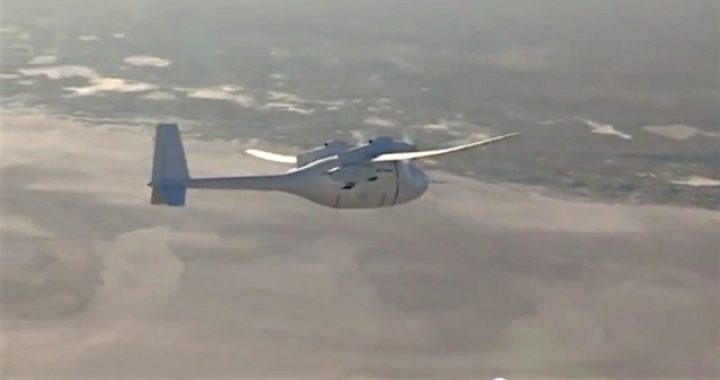
It seems that every day we publish another story about the expansion of President Obama’s drone program. Drones swarm over a region of Pakistan firing Hellfire missiles at suspected terrorists and a drone tracks an American on his own farm so that a SWAT team can rush in and arrest him.
In response to the crescendo of coverage of the drone war some have posited that there is no difference between the government’s or law enforcement’s use of a drone and the use of a helicopter. No warrant is required for police to deploy a helicopter to search for criminals evading capture, therefore no warrant should be required to justify the use of a drone toward a similar end.
There is a question, however, of whether there is a legal distinction to be made between the level of search conducted by the human eye (whether the searcher is on foot or in a helicopter) and that of a drone’s powerful never-blinking optics. Such an inarguable increase in police perception is not an insignificant decrease in the privacy expectation enjoyed by landowners and protected for centuries by timeless principles of Anglo-American law.
Given this encroachment into the formerly sacrosanct territory of individual liberty, Americans are right to resist the government’s apparent plan to fill the skies of our Republic with remote-controlled agents of the President and police.
In point of fact, a government or law enforcement agency may be less inclined to seek a warrant when the search is being conducted using a drone. The target of the hunt will likely be unaware that he is being tracked and thus government (at any level) can keep a close eye on those considered threats to national (or local) security without having to permit the eye of the court to look over their shoulder.
Regardless of these critical constitutional considerations, recent advancements in drone capabilities will inarguably widen the gap between traditional and unmanned forms of surveillance.
Although still in the experimental phase, an enormous unmanned aerial vehicle designed and built by Boeing made its maiden voyage last Friday. At 6:22 in the morning, this giant leap in drone technology was displayed in the skies over Edwards Air Force Base in California. For 28 minutes, the hydrogen-powered super drone (pictured above) flew at an altitude above 4,000 feet before making a very rough landing in a dry lake bed in the Mojave Desert.
Named Phantom Eye, the drone is poised to “vastly expand the reach of military spy craft.” The hydrogen propulsion system will allow the new vehicle to remain airborne for up to four days, quite an improvement over the 30-hour flight time typical of drones currently in use.
Based in Chicago, Boeing engineers are busy putting the drone back together and have announced that the device will soon be back in the sky undergoing even more demanding tests of its vaunted capabilities.
Phantom Eye has a 150-foot wingspan and was constructed at Boeing’s Phantom Works factory (formerly McDonnell Douglas Phantom Works) located at Lambert Field in St. Louis, Missouri. While the devices being built at the St. Louis plant may be kept secret, the purpose of this latest product is not: The Phantom Eye will allow users to conduct crystal-clear surveillance over a wide area from a nearly invisible altitude of 65,000 feet.
In a statement published on the defense contractor’s website, Phantom Works President Darryl Davis said:
This day ushers in a new era of persistent Intelligence, Surveillance and Reconnaissance (ISR) where an unmanned aircraft will remain on station for days at a time providing critical information and services. This flight puts Boeing on a path to accomplish another aerospace first — the capability of four days of unrefueled, autonomous flight.
It is the pinning of a definition on the term “critical information and services” that will cause problems for the American Republic.
Glenn Greenwald reported recently on another new drone being deployed by the U.S. military in Afghanistan known as “The Gorgon Stare.” The choice of that codename reveals more about the government’s goal in the use of drones than perhaps many would recognize.
According to the definition published by pantheon.org, “a Gorgon is a monstrous feminine creature whose appearance would turn anyone who laid eyes upon it to stone. Later there were three of them: Euryale (“far-roaming”), Sthenno (“forceful”), and Medusa (“ruler”)….”
Forceful, far-roaming rulers whose never-blinking eyes bring instant death to those caught in its gaze. With such spot-on descriptions of the fearsome qualities of these drones, perhaps those promoting their use are no longer afraid of openly (though perhaps not obviously) touting their terrible power.
One notable development extant in the Phantom Eye is that no longer will a human hand need to be on the joystick controlling the flight of the drone. As reported by Boeing, Phantom Eye’s on-board computer can be programmed in advance to carry out its mission with very little human interaction beyond the design of the flight plan and the identification of the target.
It is being reported that Boeing built the hydrogen-fueled Phantom Eye on spec — meaning it does not have a contract for the drone. While such an expensive gamble may seem like a foolhardy dice-roll, given the proliferation of demand — foreign and domestic — for these airborne assassins, it seems likely that Boeing will be able to make a profit on their investment.
While the Obama administration has made no secret of its fondness for remote-control killing of suspected threats to our national security, there seems to be no indication of how the White House would react should other nations decide to deploy drones over the United States to search and destroy threats to their own national security.
This touchy, though absolutely reasonable, subject was boldly broached by ABC News White House correspondent Jake Tapper at press conference with Obama administration spokesman Jay Carney on Tuesday. The exchange between Tapper and Carney is very telling.
When asked by Tapper how the President would respond should another country develop their own drones and then fly them over American territory to search for those considered “terrorists” by that regime, Carney responded:
[W]ithout getting into very sensitive issues that go to the core of our national security interests, I can simply say that this president, this commander in chief, puts a great deal of thought and care into the prosecution of and implementation of the policy decisions he makes. And that includes in the effort to combat al Qaeda in the Af-Pak region and around — and around the world.
There is no question, as the President has stated on many occasions, that the decisions that a commander in chief has to make when it comes to war and peace, when it comes to defending the United States and protecting the United States and our allies, are weighty, serious decisions. And he treats them that way every time he makes one.
That is a stereotypical sidestep worthy of a White House press secretary. Rather than address the serious issue raised by Tapper, Carney used the question as a springboard for reminding citizens of this Republic that we have a leader and he will protect us, no matter the cost.
As surveillance drones populate the skies at home and abroad, we are we being inculcated to accept the intrusion of the all-seeing eye of government and to modify our behavior accordingly. We must accept this new authoritarianism where we are constantly watched, the watchers are invisible, the watchers have weapons, and the government will use them to maintain its version of “law and order.”



